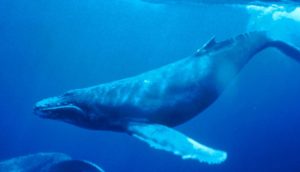Is it really all about the eco-system?

Back when we all were in Intro to Biology 101, we all learned that eco-systems are only as strong as their weakest links. In 2017, we saw many examples of a change in the eco-system from California to the Bering Sea.
The Blob, or El Nino climate event, infected the Pacific Ocean with a higher than normal average water temperature. As written in the Seattle Times, January 19th, “ Scientists at NASA on Thursday ranked this past year as the second warmest year since reliable record keeping began in 1880, trailing only 2016”. What made those numbers even more problematic is that 2017 was not forecast to be a strong El Nino year. 2017 should have been a weaker period transitioning to cooler trending ocean temperatures. We all wonder if we are setting the new normal temperature levels.
What does that mean for our marine eco-systems?

It means species that are strong and plentiful in cooler water temperatures will struggle as that temperature increase. Krill is one such group. As water warms in the Pacific the Krill population suffers. That means the food supply for larger fish also suffers. Herring populations suffer, and therefore salmon, cod and halibut populations suffer. It is all linked in the same eco-system. As Ben Fisher wrote in Under Current magazine, “The warm water increased the metabolism of cod, while reducing available food, resulting in poor body condition and increased mortality’, according to the National Pacific Fisheries Management Council.” The Cod fishing quota for 2018 has been reduced by 80% for the Alaskan Gulf and 25% for the Bering Sea.
How do these connections impact our seafood?

This last summer we saw several examples for migrating Humpback whales beaching themselves in the Pacific Northwest, starving. What do Humpbacks eat? Krill. The herring fishery is worried about harvest limits because of lessening resource. What do herring eat, Krill. We have had a year of shockingly weak King Salmon return to Washington and Alaskan rivers. What do King Salmon eat? Herring. All the players in an eco-system quickly start to feel the pain of its’ weakest link. Maybe following the weather is a tool that the seafood industry and the vendors to that industry should use when considering where the fish are going. In such a deeply interconnected and interdependent eco-system, each link in the chain weighs heavily on the success of the entire system.



